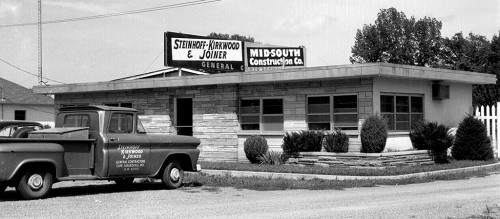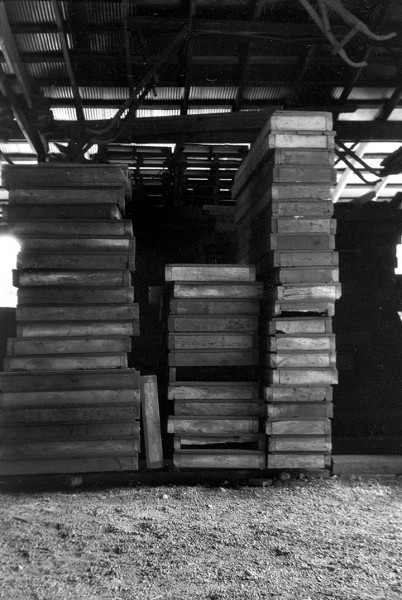 Jim Kirkwood and L.V. Steinhoff of Steinhoff, Kirkwood and Joiner decided the summer of 1962 was the perfect time to introduce sons Ken and Jim to the construction business. I was 15, stood about 5’9″ tall and weighed all of about 112 pounds if I had rocks in my pockets. Jim was a year older, taller, but but more gangly.
Jim Kirkwood and L.V. Steinhoff of Steinhoff, Kirkwood and Joiner decided the summer of 1962 was the perfect time to introduce sons Ken and Jim to the construction business. I was 15, stood about 5’9″ tall and weighed all of about 112 pounds if I had rocks in my pockets. Jim was a year older, taller, but but more gangly.
The purpose of our employment as laborers was ostensibly to let us put some money in the bank. I’m pretty sure the REAL purpose was to encourage us NOT to go into the family business.
We did a lot of busy work, but we earned our $30 or so a week when a job was completed and all the concrete forms came back. Dealing with sheets of 3/4″ 4’x8′ cedar plywood that weighed almost as much as I did was bad enough. Unloading truckloads of the finished forms was worse.
When they came in, we had to use wire brushes to scrape off all the concrete still sticking to the plywood. Then we had to cork any holes in the wood. (That was the easiest and most fun part. I still have a big can of corks in my shed.)
Form oil was nasty stuff
 The last step before stacking them was to spray the plywood with form oil that was supposed to keep the concrete from sticking to the wood. It was nasty stuff and it stuck to us better than it stuck to the plywood.
The last step before stacking them was to spray the plywood with form oil that was supposed to keep the concrete from sticking to the wood. It was nasty stuff and it stuck to us better than it stuck to the plywood.
While it was still dripping wet, we had to stack it like in the photo.
In 1962, 2x4s were REALLY 2″ x 4″ and 3/4″ plywood was REALLY 3/4″. Based on that, the forms on the right are stacked almost 9 feet above the gravel floor.
Notice how you can’t see all the way to the other side? That’s because the forms on that side are stacked to the rafters. This was only a part of it, too. The whole lumber shed was about 100 feet long.
I wrote about the night Friend Shari invited me to a pool party at the country club after a day of spraying form oil and wrestling forms.
Newspapering was more appealing
Mission accomplished, Dad. By the next summer, I had landed a cushy newspaper job.
Our buildings are long gone, now part of what used to be called SEMO Stone. The construction company moved down to Dutchtown in the late 60s or early 70s. Dad was in the process of retiring when he died in 1977.
You can click on the photos to make them larger, but I wouldn’t suggest wearing your good clothes if you want to take a closer look at the forms. Oil, you know.
